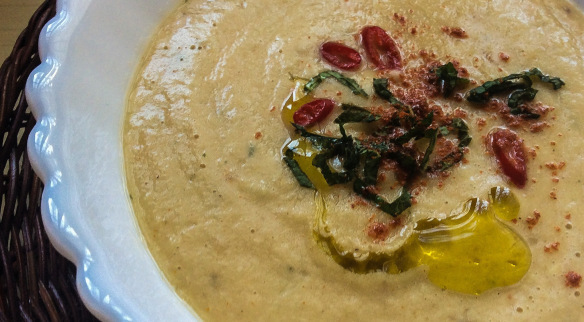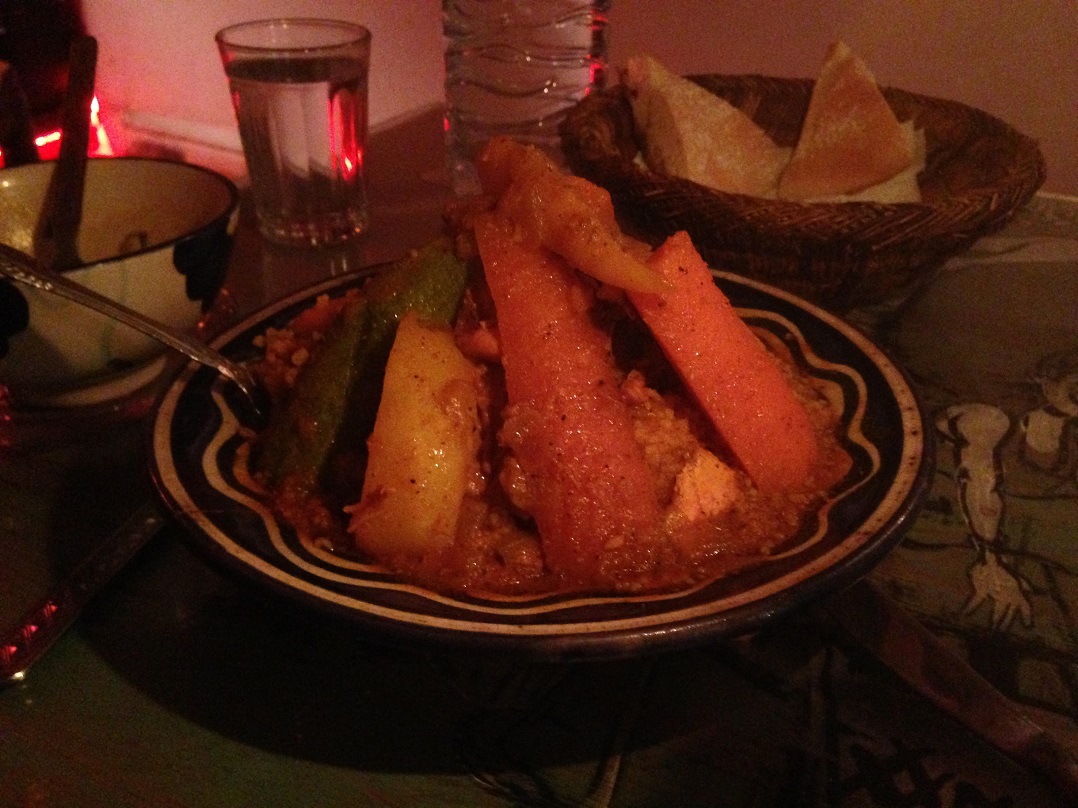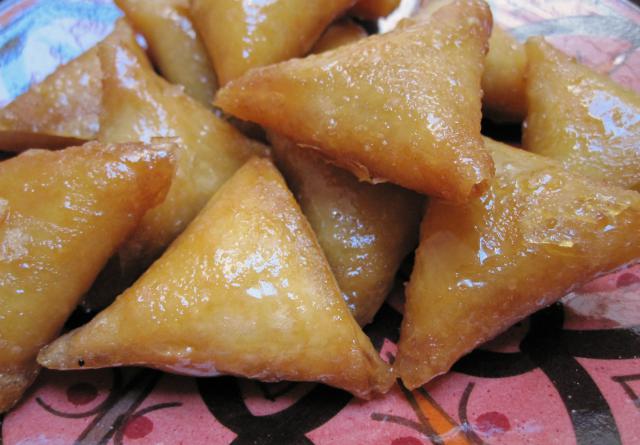Updated: I forgot to tell you about eating camel.
It’s that time again. We’ve eaten our way through Morocco and we’re pleased to share the delicious deliciousness that is Moroccan cuisine.
As always,we start with…
Breakfast
It’s breads ‘n spreads y’all. The fresh squeezed orange juice is always top notch, the croissants are inconsistent, and the msemen (stop laughing, that’s actually how it’s spelled) is quite good. The msemen – pronounced muss-muhn – is a bit of a mix between Indian naan and a Mexican tortilla.

There is also a breakfast soup called bessara, which we somehow managed to not know about until very late in our trip. We never had the opportunity to order it, in part because we often took advantage of the included breakfast at our hotel, and in part because we usually woke up pretty late. It’s in the recipe bank now, though, so as soon as we get back we’ll be giving it a shot.

Omelettes
Not just for breakfast anymore, omelettes are something of a staple here. Our first notable encounter was at a cafe in Souk Elarbaa Du Gharb. Our server brought us a basic folded egg omelette and then poured a couple of generous tablespoons of the most delicious olive oil on them. If this is ever offered to you accept it with grace. You’re on vacation not a diet. It’s marvelous.
Our second encounter was in Tafraout, another small town in the mountains. We were befriended by a local hotel owner, Abdou, who is delighted to talk about how is omelette received a write-up in Lonely Planet. We had to try it. It did not disappoint.

Harira Soup
This soup is traditionally eaten to break the Ramadan fast here, but it’s available almost everywhere (but only after 5 pm). This soup is delicious. We took a cooking class in Marrakesh and learned how to make it. It’s super easy. It’s a hearty, comforting soup.

Moroccan Salad
It’s on every menu and they all do it a little differently. Sometimes it’s diced tomatoes, cucumbers, and olives. Sometimes it’s tomatoes, onions, and tuna. Sometimes it has rice and potatoes in it. It’s a solid choice if you’re looking for something light, but I never did quite find anything consistent beyond the name.

Tagine
Probably the most common item on any menu, this clay pot dish is a savory mix of roasted meat and/or veggies. We were rarely disappointed by this dish (on one occasion the chicken was overcooked to the point of leather). Street vendors and five star restaurants all serve it with mostly the same level of quality.

Tanjia
Another take on the tagine, only this dish is cooked in a vase like earthen vessel and then slow cooked in the fires of the local hammam (bath house). It is most common in Marrakesh but we sometimes saw it on the menu in other cities, most notably in Chefchaoen. If you’re ordering it in a restaurant you’ll need to put in your order a day ahead of time. There are ways to make your own, but we didn’t learn about that until after we left the city. Check out these two websites for advice about making them yourself on your trip to Marrakesh.

Camel
Guess what? You can eat camel here! It makes sense given how many of them are around, but it was surprising when I saw it on the menu. Like eating elk in Colorado. We had this at the Philippe Rey Petit Bistro in Rabat. It was tender and steaky. If you’re a meat eater, this is one that’s worth a try.

Couscous
You guys, we’ve been cooking couscous all wrong. All. Wrong. Frankly, even some of the couscous here in Morocco is underwhelming. But when you get a great one you’ll know it. We were in Essouira when we experienced ours. It all comes down to the broth they serve with the meal. Pour it over the couscous for a stew-like consistency.

Pastilla
The Moroccans have a highly developed sweet tooth. This dish is very good, but it can feel a bit like dessert. Shredded chicken is mixed with dates and cinnamon and then wrapped in papery philo dough and baked.

Briouats
The smaller cousin to the pastilla, these stuffed phylo pastries come in savory and sweet varieties. They’re good for walking around snacks or starters during a formal meal. Generally they’re filled with meats or cheeses.

Spiced Olives
Olives will arrive at your table the way chips and salsa show up at a Mexican restaurant. We found the olives in the north to be quite bitter, but in the south and along the coasts they were savory and soft. On occasion, they would show up in a marinade of garlic, lemon, parsley, red pepper, and thyme. Brilliant.

Donuts and Other Sweets
It’s a land of sugary goodness. Ryan and I opted for these donuts whenever we saw them being sold from the street vendors. Plain or dusted with sugar, they’re delicious. There’s usually a lot of sweets available on the street or in the cafes, but fair warning that most of them are swarming with bees. If you can get past the fact that bees have been crawling on your food you’re golden.

Our only complaint is that every Moroccan restaurant – and I mean every single one – has the exact same core menu. In some cases it is literally the same menu. It’s like someone got a hundred of them printed up and then disseminated them evenly among the area restaurants. If you are in Morocco for a week or two you’ll be happy as a clam eating tagines and couscous and pastillas. But after that…well, it gets a little dull. Order a plate of seafood pasta or something.
Wow, what grand fare!
LikeLike
these look amazing!!! 🙂
I was wondering if you were on FB at all? It would be amazing if you could share your recipe in our group, would love for you to join our community of food lovers! Check us out here: https://www.facebook.com/groups/OnlyGoodEats/
LikeLike
Hi Andrew! Thanks for reaching out. I’d love to share some recipes. I’m not back into a regular kitchen for another couple of months, though. I’d love to make a few of the dishes and get pictures that I can share. Will that work? We’re traveling until probably early June. So after that I’ll have a bit more stability in my life.
LikeLike
absolutely! It’s a group that revolves around anything food realted! Feel free to post that stuff 🙂
LikeLike
[…] That’s a wrap for eating in Egypt. For other food related posts, check out our reviews of the food in Portugal, Spain, and Morocco. […]
LikeLike